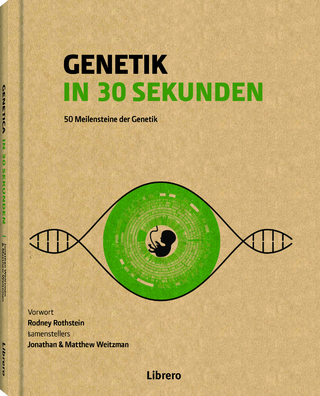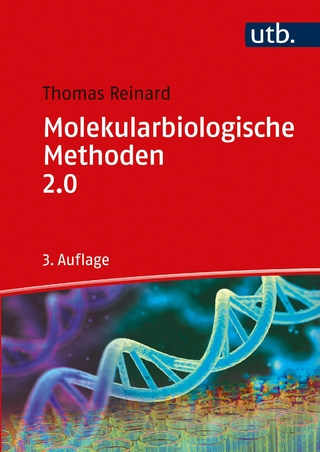
Protocols for Gene Analysis
Humana Press Inc. (Verlag)
978-0-89603-258-3 (ISBN)
It is now twenty years since Cohen and Boyer's first steps into DNA cloning. In the time since then, there has been an ever increasing acc- eration in the development and application of the cloning methodology. With the recent development of the polymerase chain reaction, a second generation of the technology has been born, enabling the isolation of DNA (and in particular, genes) with little more information than the p- tial knowledge of the sequence. In fact, DNA sequencing is now so advanced that it can almost be carried out on the industrial scale. As a consequence of these advances, it now appears feasible to sequence whole genomes, including one the size of the human. What are we going to do with this information? The future of basic molecular biology must lie in the ability to analyze DNA (and especially the genes within it) starting at the DNA level. It is for these problems that Protocols for Gene Analysis attempts to offer solutions. So you have a piece of DNA, possibly a gene--what do you do next? The first section of this book contains a number of "basic" te- niques that are required for further manipulation of the DNA. This s- tion is not intended to be a comprehensive collection of methods, but merely to serve as an up-to-date set of techniques. I refer you to other volumes in the Methods Molecular Biology series for further rec- binant DNA techniques.
Basic Recombinant Dna Techniques.- Transformation of Bacteria by Electroporation.- Direct Cloning of Agtll cDNA Inserts Into a Plasmid Vector.- PCR Cloning Using T-Vectors.- Thermal Cycle Dideoxy DNA Sequencing.- In Vitro Mutagenesis.- Ordered Deletions Using Exonuclease III.- Site-Directed Mutagenesis Using a Double-Stranded DNA Template.- Site-Directed Mutagenesis Using a Uracil-Containing Phagemid Template.- Construction of Linker-Scanning Mutations by Oligonucleotide Ligation.- Construction of Linker-Scanning Mutations Using the Polymerase Chain Reaction.- Localized Random Polymerase Chain Reaction Mutagenesis.- Genomic Structure.- The Simultaneous Isolation of RNA and DNA from Tissues and Cultured Cells.- Physical Mapping of the Human Genome by Pulsed Field Gel Electrophoresis.- Field Inversion Gel Electrophoresis.- Enhanced Chemiluminescent Detection of Horseradish Peroxidase Labeled Probes.- Nonradioactive Oligonucleotide Probe Labeling.- Analysis of DNA Restriction Enzyme Digests by Two-Dimensional Electrophoresis in Agarose Gels.- Inverse Polymerase Chain Reaction.- Sequence Variations.- Use of Silver Staining to Detect Nucleic Acids.- A Nonradioactive Method for the Detection of Single-Strand Conformational Polymorphisms (SSCP).- Temperature Gradient Gel Electrophoresis (TGGE) for the Detection of Polymorphic DNA and RNA.- TGGE in Quantitative PCR of DNA and RNA.- The PGK-PCR Clonality Assay (PPCA).- Direct Sequencing of PCR Products.- Gene Expression.- The Use of Riboprobes for the Analysis of Gene Expression.- Quantification of Absolute Amounts of Cellular Messenger RNA by RNA-Excess Solution Hybridization.- Measurements of Rate of Transcription in Isolated Nuclei by Nuclear “Run-Off” Assay.- An RNA Polymerase II In Vitro Transcription System.- SIMapping Using Single-Stranded DNA Probes.- Single Primer-Mediated Polymerase Chain Reaction.- Protein-Dna Interactions.- In Vivo DNA Footprinting by Linear Amplification.- DNA Photofootprinting with Rh(phi)2bpy3+.- The Gel Retardation Assay.- The Southwestern Assay.- Cloning DNA Binding Proteins from cDNA Expression Libraries Using Oligonucleotide Binding Site Probes.- Protein Function.- 6xffis-Ni-NTA Chromatography as a Superior Technique in Recombinant Protein Expression/Purification.- Production of 35S-Labeled Proteins in E. coli and Their Use as Molecular Probes.- Preparation and Ligand Screening of a ?gt11 Lysogen Library.
| Erscheint lt. Verlag | 27.4.1994 |
|---|---|
| Reihe/Serie | Methods in Molecular Biology ; 31 |
| Zusatzinfo | XV, 411 p. |
| Verlagsort | Totowa, NJ |
| Sprache | englisch |
| Maße | 155 x 235 mm |
| Themenwelt | Naturwissenschaften ► Biologie ► Genetik / Molekularbiologie |
| Naturwissenschaften ► Biologie ► Mikrobiologie / Immunologie | |
| Naturwissenschaften ► Biologie ► Zellbiologie | |
| Technik ► Umwelttechnik / Biotechnologie | |
| ISBN-10 | 0-89603-258-2 / 0896032582 |
| ISBN-13 | 978-0-89603-258-3 / 9780896032583 |
| Zustand | Neuware |
| Informationen gemäß Produktsicherheitsverordnung (GPSR) | |
| Haben Sie eine Frage zum Produkt? |
aus dem Bereich


